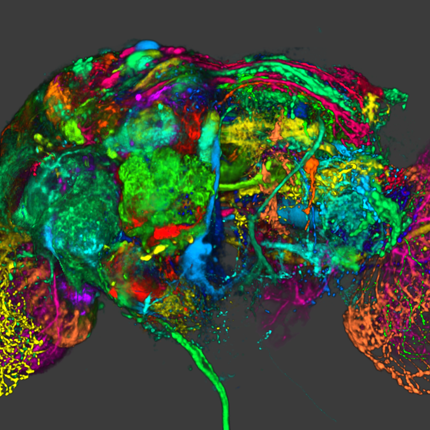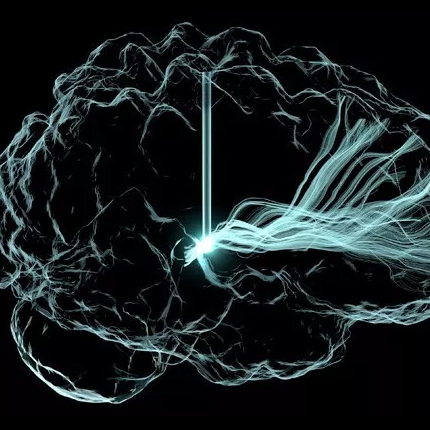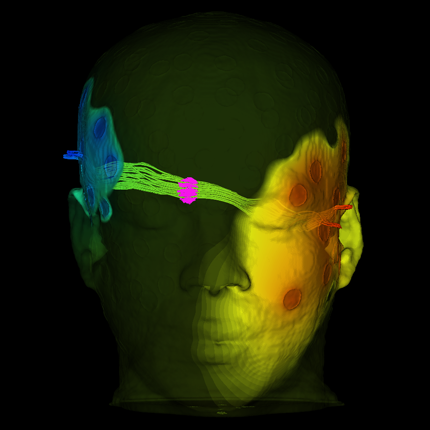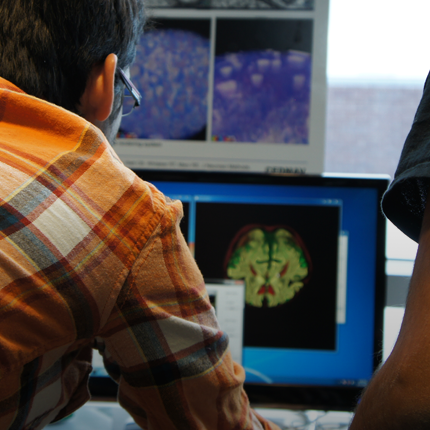SCI Publications
1996


G.J. Ryder, M. Berzins, T.H.C. Childs.
“Modelling Simple Feature Creation in Selective Laser Sintering,” In Proc 7th Symposium on Solid Free Form Fabrication, University of Texas at Austin, Edited by J.W. Barlow et al., pp. 567--574. 1996.


H.W. Shen, C.R. Johnson, K.L. Ma.
“Global and Local Vector Field Visualization Using Enhanced Line Integral Convolution,” In Symposium on Volume Visualization, IEEE Press, pp. 63--70. 1996.


H.W. Shen, C.D. Hansen, Y. Livnat, C.R. Johnson.
“Isosurfacing in Span Space with Utmost Efficiency,” In IEEE Visualization `96, IEEE Press, pp. 287--294. 1996.


P.A. Sleigh, M. Berzins, P.H. Gaskell.
“A Reliable and Accurate Technique for the Modelling of Complex Hydraulic Flows,” In Proceedings of the First International Symposium on Finite Volumes for Complex Applications, Hermes, Paris, pp. 635--642. 1996.
ISBN: 2-86601-556-8


J.D.B. Smith, A.S. Tomlin, M. Berzins, V. Pennington, M.J. Pilling.
“Modelling the effects of Concentrated Emissions Sources on Tropospheric Ozone,” In Proceedings of the 3rd Workshop on Modelling of Chemical Reaction Systems, Heidelberg, Germany, Published on CD-ROM, July, 1996.
ISBN: 3-932217-00-4
Numerical models that describe the chemical processes occurring in the troposphere, in the main, are still using fixed or telescopic grids to provide greater detail where it is required, such as near large emissions sources. While the use of adaptive grids has become well accepted in the fields of aeronautical and mechanical engineering, the adoption of adaptive gridding techniques in atmospheric modelling has been somewhat slower. Tomlin et al [1] recently demonstrated the use of time-dependent adaptive mesh gridding techniques applied to the investigation of a single power station plume, with regards to regional ozone levels. The results of that paper highlighted the differences in the total and peak concentrations of ozone arising from using fixed grids, as opposed to using adaptive grids.
Ozone concentrations in the atmospheric boundary layer, the bottom kilometre of the troposphere, are dependent on the interactions of nitrogen oxides and the volatile organic compounds (VOCs) that are emitted from both anthropogenic and biogenic sources. There are many more chemical species involved in the processes of the atmospheric boundary layer than in the stratosphere. This makes the use of detailed chemical mechanisms with fine mesh resolution difficult in two space dimensions, and prohibitively expensive for three space dimensions.
This paper investigates the effects of multiple point sources interacting with the more diffuse area sources arising from urban emissions, and will show the differences arising from the use of adaptive gridding techniques rather than fixed grids. The numerical code, SPRINT2D, provides spatial and temporal error controls for limiting the adaptation of the grid for a length scale ranging from a few hundred metres to a few hundred kilometres.
Comparisons will also be made between a systematically reduced mechanism, CBMLeeds[2], and the Generic Reaction Set (GRS) of Azzi et al [3] to see the advantages of the two approaches. CBMLeeds originates from the CBM-Ex scheme of Gery et al [4], which uses lumped organic species, as opposed to the heavily parameterised organic chemistry of the GRS.


J.A. Weiss, B.N. Maker, S. Govindjee.
“Finite Element Implementation of Incompressible, Transversely Isotropic Hyperelasticity,” In Computer Methods in Applied Mechanics and Engineering, Vol. 135, pp. 107--128. 1996.
1995

J. Ahrens, C.D. Hansen.
“Cost-Effective Data-Parallel Load Balancing,” In International Conference on Parallel Processing, Oconomowoc, Wi., pp. 14--18. August, 1995.


O. Alter, Y. Yamamoto.
“Inhibition of the Measurement of the Wave Function of a Single Quantum System in Repeated Weak Quantum Nondemolition Measurements,” In Physical Review Letters, Vol. 74, No. 21, American Physical Society, pp. 4106--4109. May, 1995.
DOI: 10.1103/PhysRevLett.74.4106


O. Alter, Y. Yamamoto.
“Can We Measure the Wave Function of a Single Wave Packet of Light?: Brownian Motion and Continuous Wave Packet Collapse in Repeated Weak Quantum Non-Demolition Measurements,” In Fundamental Problems in Quantum Theory, Vol. 755, Edited by D.M. Greenberger and A. Zeilinger, New York Academy of Sciences, New York, NY, pp. 103--109. 1995.
DOI: 10.1111/j.1749-6632.1995.tb38960.x

A. Banerjee, G.E. Christensen, J. Haller, S. Joshi, M.E. Raichle, M.I. Miller.
“Accommodating anatomical variability in functional imaging via deformable templates,” In Proc. 33rd Annual Allerton Conference on Communication, Control and Computing, pp. 275--284. 1995.


M. Berzins, J.M. Ware.
“Positive Cell Centered Finite Volume Discretisation Methods for Hyperbolic Equations on Irregular Meshes,” In Applied Numerical Mathematics, Vol. 16, pp. 417--438. 1995.
The conditions sufficient to ensure positivity and linearity preservation for a cell-centered finite volume schemefor time-dependent hyperbolic equations using irregular one-dimensional and triangular two-dimensional meshes arederived. The conditions require standard flux limiters to be modified and also involve possible constraints on themeshes. The accuracy of this finite volume scheme is considered and is illustrated by two simple numerical examples.


M. Berzins, P. Gaskell, A. Sleigh, A.S. Tomlin, J. Ware.
“An adaptive CFD solver for time-dependent environmental flow problems,” In Proceedings of the Institute of Computational Fluid Dynamics Conference, Edited by K.W. Morton, M.J. Baines, Oxford University Press, pp. 311-317. 1995.


M. Berzins, T.H.C. Childs, K.W. Dalgarno, G.R. Ryder, G. Stein.
“Densification and Distortion in Selective Laser Sintering of Polycarbonate,” In Proc 6th Symposium on Solid Free Form Fabrication, University of Texas at Austin, Edited by J.W. Barlow et al., pp. 196--203. 1995.


M. Berzins.
“Temporal Error Control in the Method of Lines for Convection Dominated Equations,” In SIAM Journal on Scientific Computing, Vol. 16, pp. 558--580. 1995.

G.E. Christensen, R.D. Rabbitt, M.I. Miller, S.C. Joshi, U. Grenander, T.A. Coogan.
“Topological Properties of Smooth Anatomic Maps,” In Information Processing in Medical Imaging, pp. 101--112. 1995.


P. Gharpure, C.R. Johnson.
“A Cellular Automaton Model of Electrical Activation in Canine Ventricles: A Validation Study,” SCI Institute Technical Report, No. UUSCI-1995-002, University of Utah, 1995.

J.W. Haller, M.I. Miller, G.E. Christensen, S. Joshi, M. Gado, J. Csernansky, M.W. Vannier.
“A Comparison of Automated and Manual Segmentation of Hippocampus MR Images,” In Proceedings of SPIE Medical Imaging, pp. 206--215. March, 1995.

J.W. Haller, G.E. Christensen, S. Joshi, M.I. Miller, M.W. Vannier.
“Digital Atlas-Based Segmentation of the Hippocampus,” In Computer Assisted Radiology: Proceedings of the International Symposium on Computer and Communications Systems for Image Guided Diagnosis and Therapy, Edited by C.C. Jaffe and H.U. Lemke and K. Inamura and M.W. Vannier, pp. 152--157. June, 1995.

C.D. Hansen, G.C. de Verdiere, M. Krogh, J. Painter, R. Troutman.
“Binary-Swap Volumetric Rendering on the T3D,” In Cray Users Group Conference, Denver, Co., pp. 61--69. March, 1995.

C.D. Hansen, M. Krogh, W. White.
“Massively Parallel Visualization: Parallel Rendering,” In SIAM Parallel Computation Conference, San Francisco, Ca., pp. 790--795. February, 1995.




